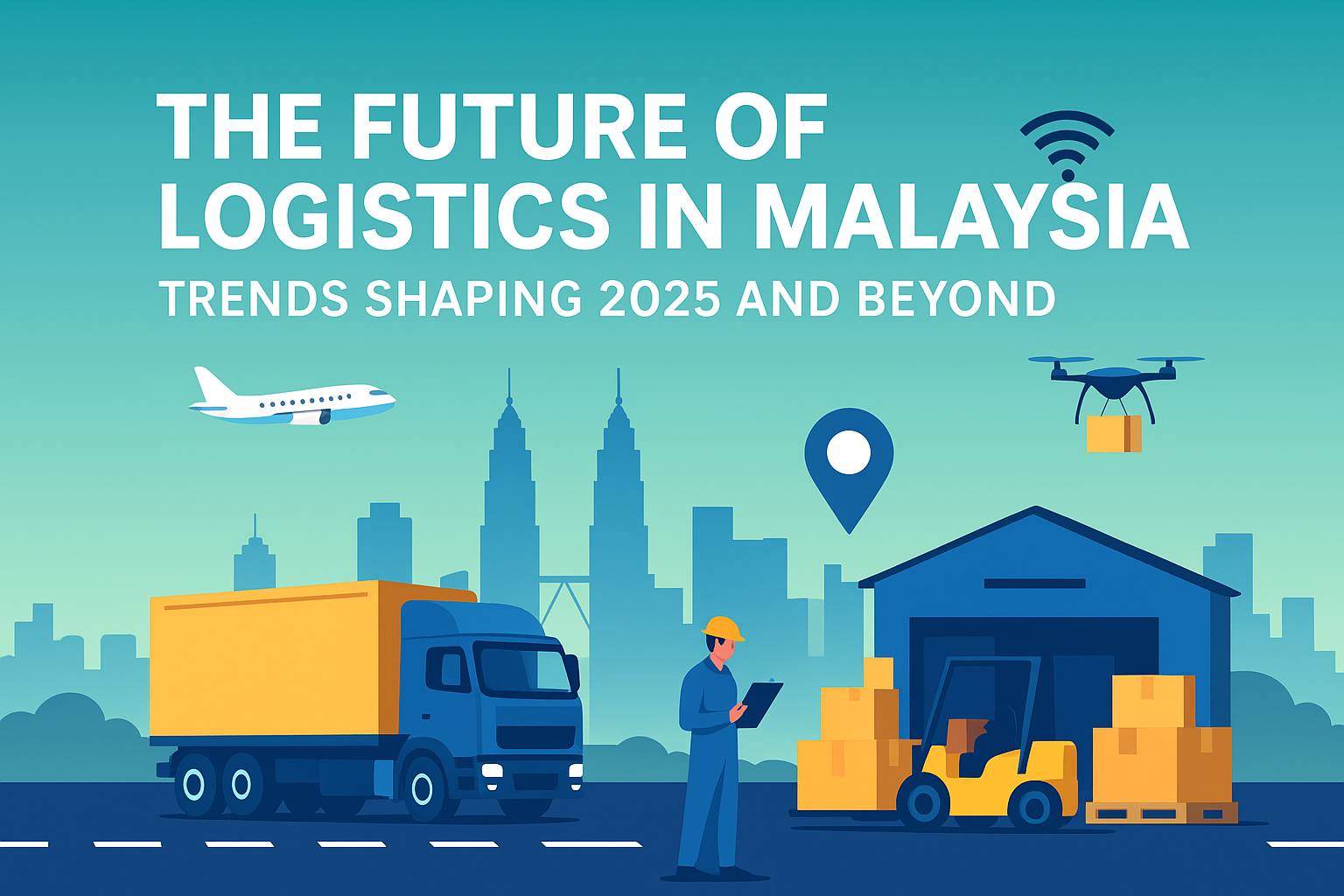The Future of Logistics in Malaysia: Trends Shaping 2025 and Beyond

The logistics industry in Malaysia has always been a cornerstone of economic growth, connecting businesses to markets across Southeast Asia and the world. As global trade, digital transformation, and sustainability demands evolve, Malaysia’s logistics sector is entering a new era of innovation and competitiveness. From smart technologies to greener practices, the logistics landscape in 2025 and beyond will look vastly different from what it is today.
Let’s explore the key trends shaping the future of logistics in Malaysia.
1. Digital Transformation and Smart Logistics
One of the most significant shifts in Malaysia’s logistics industry is the rapid adoption of digital technologies. Traditional logistics operations are being replaced by smart, data-driven systems that improve speed, transparency, and efficiency.
Artificial intelligence (AI), the Internet of Things (IoT), and automation are revolutionizing supply chain management. For instance, AI-powered predictive analytics helps companies forecast demand, manage inventory more effectively, and optimize delivery routes. IoT devices such as smart sensors enable real-time tracking of goods, providing end-to-end visibility that enhances customer satisfaction.
Many logistics providers in Malaysia are also investing in automated warehouses and robotic systems to reduce labor dependency and minimize errors. With Industry 4.0 becoming a national priority, the logistics industry is poised to become smarter, faster, and more customer-centric in the coming years.
2. E-Commerce and the Rise of Last-Mile Delivery
The explosive growth of e-commerce has completely reshaped the logistics sector. In Malaysia, online shopping continues to soar, with consumers demanding faster and more reliable deliveries. This trend has pushed logistics providers to rethink their strategies, particularly in the area of last-mile delivery — the final step that brings goods from the distribution center to the customer’s doorstep.
To meet these demands, many companies are embracing micro-fulfilment centers, delivery drones, and automated parcel lockers to speed up deliveries. Moreover, partnerships between e-commerce platforms and logistics firms are becoming increasingly common, enabling greater efficiency and shared use of resources.
The rise of same-day delivery services is another notable trend. By 2025, consumers in major Malaysian cities like Kuala Lumpur, Penang, and Johor Bahru will expect same-day or even two-hour delivery options as standard. Logistics providers that can adapt to this fast-paced demand will gain a significant competitive advantage.
3. Sustainability and Green Logistics
Sustainability is no longer a buzzword—it’s a business imperative. As Malaysia works toward its carbon reduction goals under the 12th Malaysia Plan, logistics companies are taking steps to minimize their environmental impact.
This shift has given rise to green logistics, which focuses on reducing carbon emissions, optimizing fuel usage, and implementing eco-friendly packaging solutions. Companies are investing in electric delivery vehicles (EVs), hybrid fleets, and renewable energy sources to power their operations.
Furthermore, route optimization software is helping logistics firms cut down on unnecessary mileage, reducing both fuel costs and emissions. By 2025 and beyond, sustainable logistics will not only enhance a company’s reputation but also align with consumer preferences for eco-conscious brands.
4. Strengthening Malaysia’s Infrastructure and Connectivity
Malaysia’s strategic geographic position — located between major global trade routes — gives it a natural advantage in logistics and transportation. The government continues to invest heavily in infrastructure to enhance connectivity within the country and across the ASEAN region.
Key projects such as the East Coast Rail Link (ECRL), Port Klang expansion, and improvements to Malaysia’s airport logistics facilities are set to boost the nation’s logistics capacity. These initiatives aim to reduce transport times, improve intermodal connectivity, and position Malaysia as a regional logistics hub.
The growing focus on multimodal transport integration — combining road, rail, air, and sea logistics — will further streamline operations, reduce costs, and enhance overall supply chain efficiency.
5. The Role of Automation and Robotics
Automation is transforming how goods are stored, sorted, and delivered. In Malaysia, logistics companies are increasingly integrating robotics into their operations, particularly in warehouses. Automated Guided Vehicles (AGVs), robotic arms, and drone technology are helping improve accuracy, speed, and safety.
In addition, autonomous delivery vehicles are gaining traction as a futuristic solution for urban logistics. While still in early stages of regulation and testing, these technologies represent the next frontier for Malaysia’s logistics efficiency. By 2030, we can expect automated logistics hubs and AI-managed fleets to be part of mainstream operations.
6. Digital Platforms and Data-Driven Decision Making
The future of logistics is data-driven. Real-time data analytics allows logistics firms to track shipment performance, predict disruptions, and make more informed decisions. Cloud-based logistics platforms are also enabling greater collaboration between shippers, carriers, and customers.
In Malaysia, startups and tech-driven logistics platforms are emerging rapidly, offering digital marketplaces for freight booking, shipment tracking, and warehouse management. This digital ecosystem is empowering small and medium-sized logistics players to compete with established international firms.
7. Human Capital and Workforce Upskilling
As logistics becomes more technology-driven, there’s a growing need to upskill the workforce. The Malaysian government and industry players are investing in training programs to build competencies in areas like data analytics, AI operations, and supply chain automation.
Developing a skilled workforce will be crucial to sustaining long-term growth. Human expertise will remain indispensable, particularly in areas that require strategic decision-making, relationship management, and problem-solving.
Conclusion: A Smart, Sustainable, and Connected Future
The future of logistics in Malaysia looks bright — powered by technology, driven by sustainability, and supported by strategic infrastructure. As digital transformation accelerates, businesses that embrace innovation and adapt to emerging trends will thrive in this competitive landscape.
By 2025 and beyond, Malaysia’s logistics industry will not just move goods efficiently — it will move the economy forward. From smart warehouses to green delivery fleets, the next chapter of Malaysian logistics is about creating a smarter, more connected, and sustainable ecosystem for the future.








